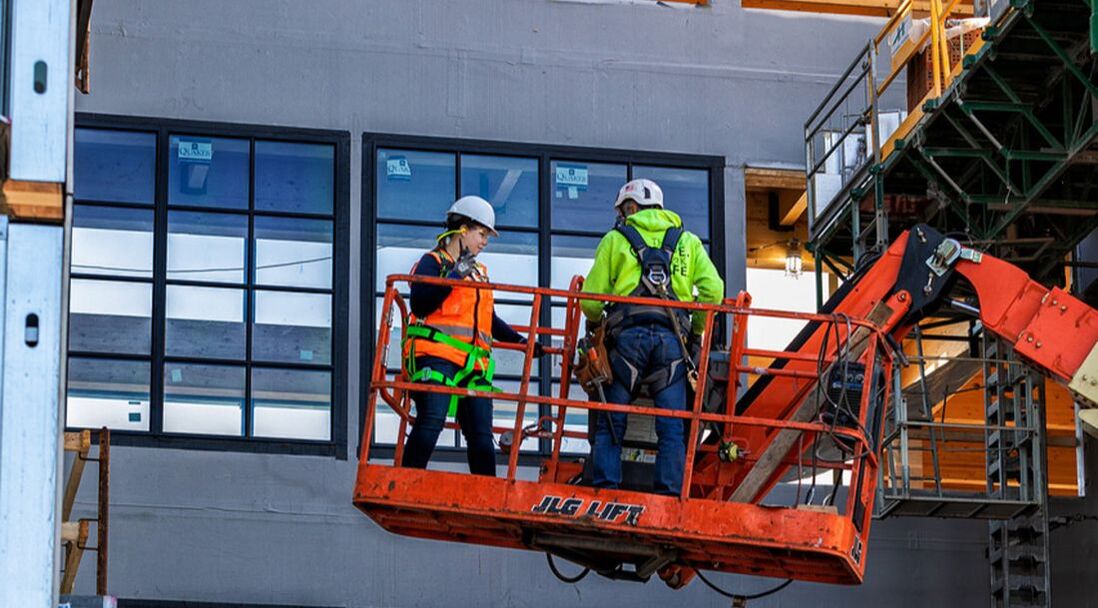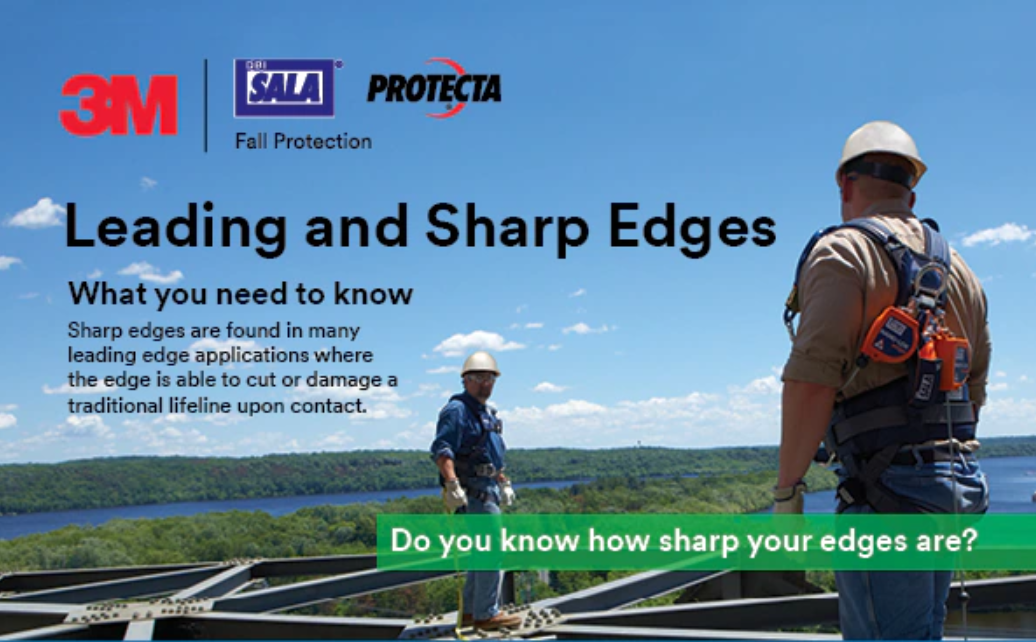Make sure you have the right fall protection for leading and sharp edge situations
April 21, 2022
Shared by 3M
Shared by 3M
|
Many personal fall arrest systems rely on lifeline materials (e.g. lanyard) to perform under dangerous conditions where falls from height are a definite possibility. But there are some applications where the use of the wrong product – for example, where a lifeline contacts a sharp edge – can have disastrous results.
That’s why it’s critically important to make sure you have the right equipment for leading edge situations and use a system specifically designed to address leading edge hazards while working at heights. Product testing and certification organizations in the United States and around the world – including the American National Standards Institute (ANSI), the Canadian Standards Association (CSA) and CE in Europe – have reexamined, based on injury statistics and other factors, how lifelines in fall protection systems perform when subjected to sharp edge applications. They’ve also placed a continued focus on leading edge applications. Through this analysis, they have concluded that these two environments (“sharp” edge and “leading” edge) present unique risks for workers at height. What is a sharp edge?
A sharp edge is one that, for practical purposes, is not rounded and has the potential to cut and even completely sever most types of lifelines. An example of a sharp edge application is a steel bar or edge that is not rounded—the smaller the edge radius, the sharper the edge. An edge radius will vary between pieces of steel and concrete depending on how thick it is and how sharp the edge of the side is. Do you know how sharp the edges are on your work site? The ANSI standard for sharp edges (ANSI Z359.14), for example, involves testing the fall arrest device’s lifeline over a piece of a steel bar with a radius of no more than .005 inches. The device must arrest the test mass and the mass must not strike the ground. What is a leading edge? To visualize a leading-edge situation, picture a worker installing decking substrate on a new building. Now imagine the worker’s fall protection system is anchored at foot level behind him. As the worker moves out and away from the anchor point while installing the decking, the worker is exposed to a potential fall over the edge of the building or the edge of an elevated platform. This is leading edge work, and it occurs when a worker uses a fall protection system anchored at foot level behind him and then moves away from the anchor point, exposing the worker to a potential fall over the edge of the surface being worked on. Unique risks of leading and sharp edge applications In sharp edge applications, the primary risk is that the lifeline can be frayed, cut, or severed, potentially resulting in the worker falling to the level below and being severely injured. However, a fall over a leading edge can pose several other risks in addition to the risks associated with a sharp edge (keep in mind, that a leading edge also can be a sharp edge). We invite you to download our leading and sharp edge infographic that discusses these other dangers, which include: Increased fall distances: When workers are attached at foot level, as they often are in leading edge applications, they will fall farther than they would if they were anchored at shoulder height or directly overhead. For this application, the need for additional fall clearance must be considered. The required clearance when anchored at foot level varies by product, so make sure to reference the product’s user instructions. You should also make sure that you have a system that has been specifically designed for leading edge applications. Lock-up speed: Self-retracting lifelines react to a fall when the lifeline accelerates out of the housing at a certain velocity. When self-retracting lifelines are anchored at foot level, the lifeline may not achieve the required acceleration during the fall until after the user’s D-ring passes over the leading edge and the user falls below the level of the anchor. This means the user may already have fallen about five feet or more before the self-retracting lifeline device senses sufficient acceleration to engage and begin arresting the fall. Increased fall arrest forces: Falling farther means the impact on the body through the fall protection system potentially will be higher when the fall is arrested. Therefore, many leading edge and sharp edge rated products contain additional energy-absorbing devices. Increased potential for swing fall hazards: If a worker falls and is off to one side away from their anchor point, they may swing like a pendulum. While this is dangerous, the danger is compounded if the worker’s lifeline is extended over a sharp edge and the lifeline saws back and forth across the edge. This can lead to a frayed, cut, or severed lifeline potentially resulting in the worker falling to the level below and being severely injured. Multiple risks call for different equipment
Previously, the industry adjusted fall protection equipment and job sites to accommodate the hazards of leading and sharp edge situations. These solutions included attaching an energy absorber to standard self-retracting lifelines, protecting edges, and elevating anchor points. While these efforts had been helpful, many organizations have now incorporated leading edge and sharp edge criteria into their standards or are working toward this new direction that now renders these previous solutions obsolete (e.g., ANSI, CSA and CE standards for self-retracting devices). For example, ANSI has confirmed a number of assumptions through its testing and analysis, including the fact that products not specifically designed for foot level tie-off (the type of anchoring most often used in these applications) will generate forces far exceeding accepted safety parameters in the event of a fall. As an example, ANSI Z359.14 requires an external energy absorber to be an integral part of the SRL lifeline in order to accommodate additional impact forces involved in a foot-level fall event. In addition, manufacturers have developed equipment to comply with the new standards to address the potential risks associated with leading and sharp edge situations. Product enhancements to address these challenges include manufacturing SRL cables out of stronger, more wear-resistance materials, using specialized energy absorbers, and employing features such as impact indicators to positively identify equipment that has been involved in a fall. The importance of training While specifically designed equipment is needed to keep workers on leading and sharp edges safe, such equipment is only effective if crews understand how to use it and why they need it. Proper training is essential to ensure that crews fully engage and understand the unique hazards related to working at height in different applications. Employers should provide regular training to their teams that meets ANSI and OSHA requirements to ensure worker safety on the job. Some fall protection providers also offer on-site training to help workers better understand and avoid the hazards of working at height, including the specific risks associated with sharp and leading edges. The bottom line when it comes to leading edge and sharp edge situations? Keep your workers safe. Be aware of the risks and hazards associated with your job site, provide the appropriate fall protection equipment and train workers on the proper use of this important equipment. These are the basic steps required to save lives in the event of a fall. Looking for more?
To learn more about fall protection and ensuring safety on your jobsite, consult with one of our safety specialists. Vertical Divider
|
Like what you're seeing here? Subscribe to the Blue Print for FREE and get the magazine sent right to your address.
|




